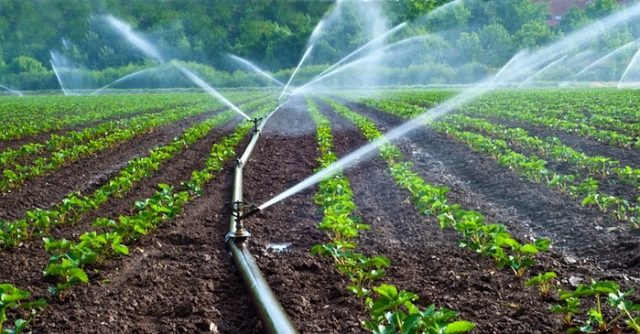By Wisdom JONNY-NUEKPE
Smallholder farmers have the potential to generate net profit of up to US$285million per annum, leveraging small-scale irrigation systems for food production, Innovation Lab for Small Scale Irrigation (ILSSI) has projected.
The ILSSI, a USAID Feed the Future project, which works to break barriers that hamper small-scale irrigation, opined that about 68 percent of suitable agricultural areas have the potential to exponentially increase crop production through irrigation.
“Around 211,000 hectares are economically and bio-physically suitable for small-scale irrigation and the available water resources can meet irrigation water requirement in most agricultural areas in Ghana,” it said.
The ILSSI project ended in the third quarter of last year, with the projection that about 700,000 smallholder farmers nationwide can harness irrigation farming to increase their incomes, if given the needed support.
It indicated that though irrigation plays a role in agriculture in Ghana, it is not sufficiently used to dramatically improve food production, nutrition and livelihoods.
Over the years, farmers have lamented the high cost involved in deploying irrigation. Limited access to irrigation infrastructure, high cost of energy, inadequate technology and high cost of irrigated crops are among challenges impeding irrigation farming.
Key agricultural zones where irrigation could heavily be relied on include Upper West, East, Northern, Savanna and Volta Regions, where tonnes of vegetables are produced.
Against this backdrop, the ILSSI maintained that farmers need access to affordable credit. It particularly highlighted the need for women, youth and resource-poor farmers to gain greater access to irrigation infrastructure and technologies to fully take advantage of opportunities in agriculture.
It also recommended that technology be made available to enhance commercial irrigation systems.
The United Nations Food and Agriculture Organization (FAO) estimates that there is approximately 1.9 million hectares of potential irrigable lands in the country.
However, the country’s irrigation policy has failed to comprehensively develop this potential to allow farmers cultivate all-year round.
Also, the policy does not adequately deal with demand-driven irrigation services to farmers through designated incentives for farmer participation in irrigation projects.

















